

A Way Forward
Ontario’s Path Towards Economic Reconciliation, Equity and Inclusive Growth
Part I: Establishing Equity in Education & Employment for Indigenous Peoples
Building on our Sharing Prosperity resource, A Way Forward, is a series that aims to advance the Truth and Reconciliation Commission’s Call to Action 92, building on the foundational National Indigenous Economic Strategy. It offers practical steps, learnings, and case studies, for Ontario businesses to advance economic reconciliation.
Introduction: Setting the Stage for Mutual Economic Prosperity
Reconciliation is about rebuilding relationships, trust and equity. A thriving Canadian economy and society celebrates Indigenous culture, fosters Indigenous entrepreneurship, and expands opportunities for all. This vision is not just aspirational; it is achievable through mutual respect and meaningful inclusion.
Indigenous participation in Canada’s workforce, education, and economy is essential for strengthening both Indigenous prosperity and Canadian businesses. As the youngest and fastest-growing population in Canada, Indigenous Peoples represent an economic force. Between 2016 and 2021, the Indigenous population grew by 9.4 per cent, almost double the growth rate of the non-Indigenous population (5.3%).
The Indigenous population is also much younger on average (33.6 years old) than the non-Indigenous population (41.8 years old). According to the 2021 Census, over 1.8 million people, or 5 per cent of Canada’s population, identify as Indigenous. Projections suggest Indigenous People will comprise 10 to 15 per cent of the labour force by 2041.
According to the Ontario Chamber of Commerce’s 2025 Ontario Economic Report, businesses understand that reconciliation is an economic opportunity, but often don’t know where to start, or where to go. The OCC and Canadian Council for Indigenous Business (CCIB) aim to give them a roadmap.
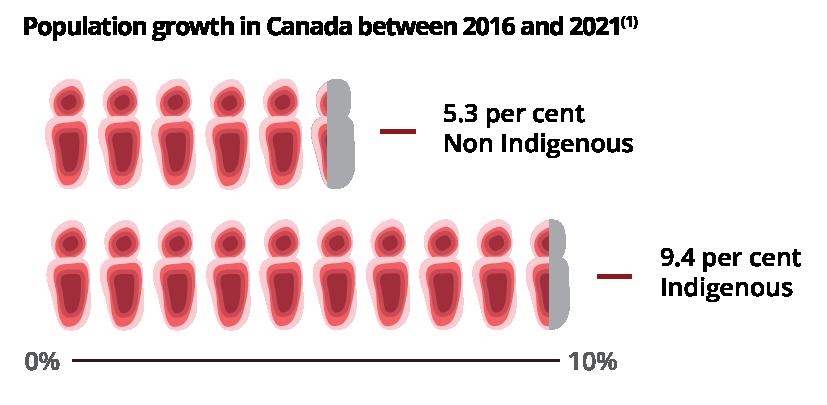
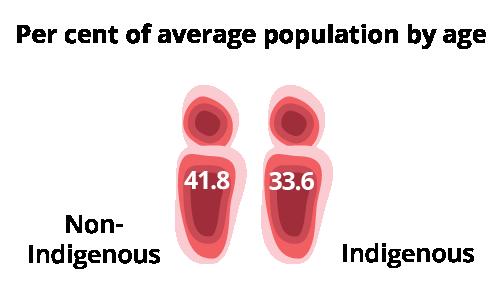

1 The Daily — Indigenous population continues to grow and is much younger than the non-Indigenous population, although the pace of growth has slowed (statcan.gc.ca), The Daily — Indigenous population continues to grow and is much younger than the non-Indigenous population, although the pace of growth has slowed (statcan.gc.ca)
2 Indspire. The Contribution of Indigenous Peoples to Future Labour Force Growth in Canada: An Update. (June 2023). Indigenous-Labour-Force-Contribution-AN-UPDATE-2023_EN.pdf (indspire.ca)
Towards Equity: Understanding Indigenous Employment Challenges
To build an inclusive, equitable and prosperous society, systemic barriers that limit Indigenous participation in the economy must be removed. Solutions include enhancing employment pathways, reimagining recruitment and training, adapting job requirements in inclusive workplaces, improving access to education, unlocking remote work opportunities, and addressing ongoing discrimination. By tackling these challenges, Indigenous people can fully harness their talent, drive economic growth and create lasting prosperity for their communities and growth for all of Canada.
Enhancing Employment Pathways and Support for Indigenous Employees
Creating clear pathways into the workforce can lead to meaningful employment opportunities for Indigenous workers. This includes leveraging Indigenous job boards, partnering with Indigenous organizations, attending community events to build relationships and awareness of Indigenous lived experience, and creating inclusive environments and supports.
Background:
Currently, 74.1 per cent of non-Indigenous Canadians are employed, compared to 64.8 per cent of self-identifying Indigenous Peoples and 47.1 per cent of First Nations living on-reserve3.
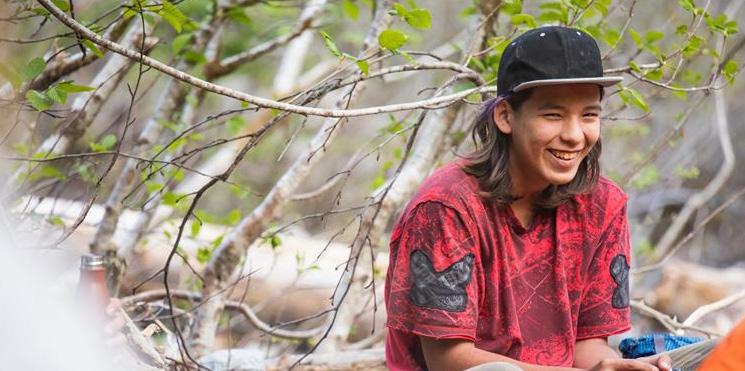
3 Melvin, Alexandria. 2023. “Postsecondary educational attainment and labour market outcomes among Indigenous peoples in Canada, findings from the 2021 Census”. Insights on Canadian Society. October. Statistics Canada Catalogue no. 75-006-X.
Reimagining Recruitment: Unique
Resources and Opportunities for Businesses
Businesses can leverage recruitment resources such as Indigenous job boards (see Indigenous Works, Aboriginal Job Board, and Indigenous Careers) and partner with Indigenous organizations (see Ontario Federation of Indigenous Friendship Centres).
For small and medium-sized enterprises, Indigenous inclusion begins with partnerships and supporting Indigenous employees. Key actions include reaching out to local communities to seek their perspectives and build partnerships on priorities that may affect the community or are in the community’s interes. When hiring, also seek to encourage a diverse pool of applicants by working with Indigenous job boards, communities and institutions. Once onboarded, it is essential to create an open culture so that Indigenous employees feel they are truly valued and can offer feedback on challenges.
Attending community events and conferences focused on the Indigenous economy can help build meaningful connections and develop relationships with Indigenous job seekers and entrepreneurs. Opportunities include, CCIB Conference & Events, First Nations Major Projects Coalition, Indigenomics, Ontario First Nations Economic Development Conference, and Indigenous Prosperity Forum.
Businesses can also experience Indigenous cultures and traditions firsthand by attending all-nation Pow Wows, community meetings, and gatherings. Businesses must seek out, recognize and celebrate the success of Indigenous Peoples and promote the accomplishments in their networks. While the work of reconciliation does not happen overnight, actively participating in these spaces is a crucial first step.
Beyond improving accessible pathways for Indigenous employment, respectfully participating in open spaces is a crucial step of learning. Businesses can support Indigenous employees by hiring in cohorts, promoting Indigenous employee resource groups, and offering mentorship. Also, recognizing role models and celebrating achievements inspires Indigenous employees to envision themselves succeeding within organizations. Creating workplaces where employees share similar backgrounds and worldviews fosters a sense of belonging, improving retention.
Building Supportive Cohorts:
Training and Recruitment for Indigenous Candidates
Large employers, including major financial institutions, are creating dedicated training programs for Indigenous graduates, strengthening the talent pipeline and building supportive cohorts. Others are adapting recruiting programs by creating dedicated job postings for First Nations, Inuit and Métis candidates for specific roles. While these efforts are a step in the right direction, their impact is hindered by the shortage of Indigenous candidates applying for available positions, and by non-Indigenous people applying for jobs roles intended for Indigenous candidates.
Scotiabank’s SOAR Program and RBC’s Indigenous Development Program offer recent Indigenous graduates the opportunity to gain exposure to different aspects of the bank, gain meaningful work experience, and develop connections including through Indigenous employee networks.
The Government of Canada and the Government of Ontario have launched programs for student co-ops and graduate recruitment. These initiatives are designed to expand outreach and increase the recruitment of Indigenous employees in institutions that shape and implement public policy.
Ontario Power Generation’s (OPG) Indigenous Opportunities Network works with Kagita Milkam, an Indigenous employment and training industry, to recruit job-ready Indigenous people for specific energy sector occupations, including skilled trades, project management and administrative roles.
BMO’s and Deloitte’s Roles for Indigenous Candidates are examples of dedicated job postings, specifically targeting First Nations, Inuit and Métis job applicants and increasing workforce diversity.
When I put out a posting, I’ll get maybe three applicants for an Indigenous education position. For other equity, diversity, inclusion, belonging postings…I had over 150 applicants. We can’t expect Indigenous Peoples to come to us. Some of our places have not been very welcoming for Indigenous people. So, it’s important for us to go to the communities.”
-Jason Seright, Vice President of Inclusion and Belonging, Humber Polytechnic
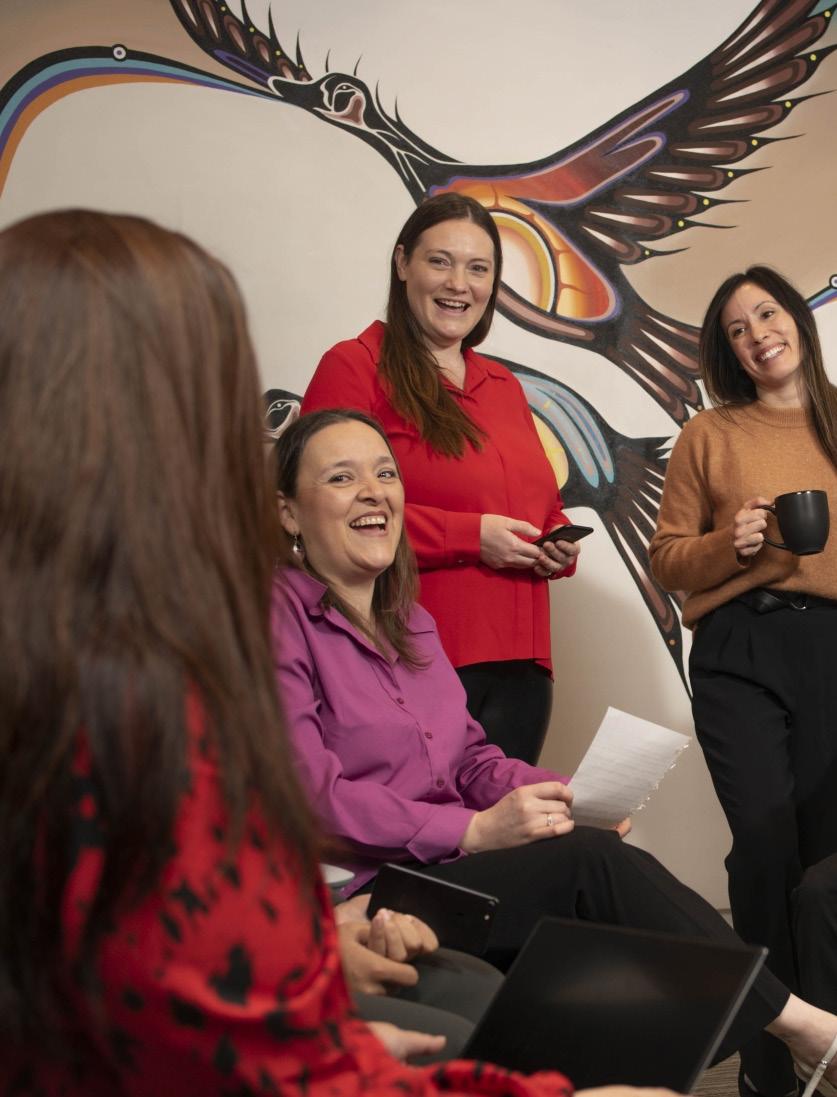
Building Inclusive Environments
Inclusive workplaces provide skills-based training in intercultural competency, conflict resolution, human rights, and anti-racism and anti-discrimination for all staff. These businesses are on the path to fulfilling The Truth and Reconciliation Commission TRC Call to Action #92, which calls on businesses to “provide education for management and staff” on Indigenous history, the legacy of residential schools, treaties and Aboriginal rights. Beyond training, true inclusion means actively seeking Indigenous perspectives, involving them in decision-making, valuing their unique worldviews, and learning from their lived experiences. Making space at the table is not just about presence; it’s about meaningful participation.
“A lot of organizations are putting all their expectations on DEI programs. So, the C-suite, directed by the Board says, ‘Go get Indigenous employees. We’re required under the Employment Equity Act…to have a certain percentage’. So, everybody goes to that checkbox. We worked for one client, and they were successfully hiring over 100 Indigenous people a year, and they were losing 120. The point is they couldn’t hire fast enough to offset the lack of retention. You’ve got to develop an enterprise-wide approach, and you’ve got to get to middle management. They’re the ones that are having the hardest time doing Indigenous inclusion off the edge of their desk, while they have financial KPIs that they need to get the bonus. Finding how to get the culture into the enterprise across all aspects is the really hard work, and it’s not going to happen overnight. You have to build a process. It’s generational. You might go backwards at first, but it’s got to be a sustainable enterprise-wide approach, and it’s got to be built with community.”
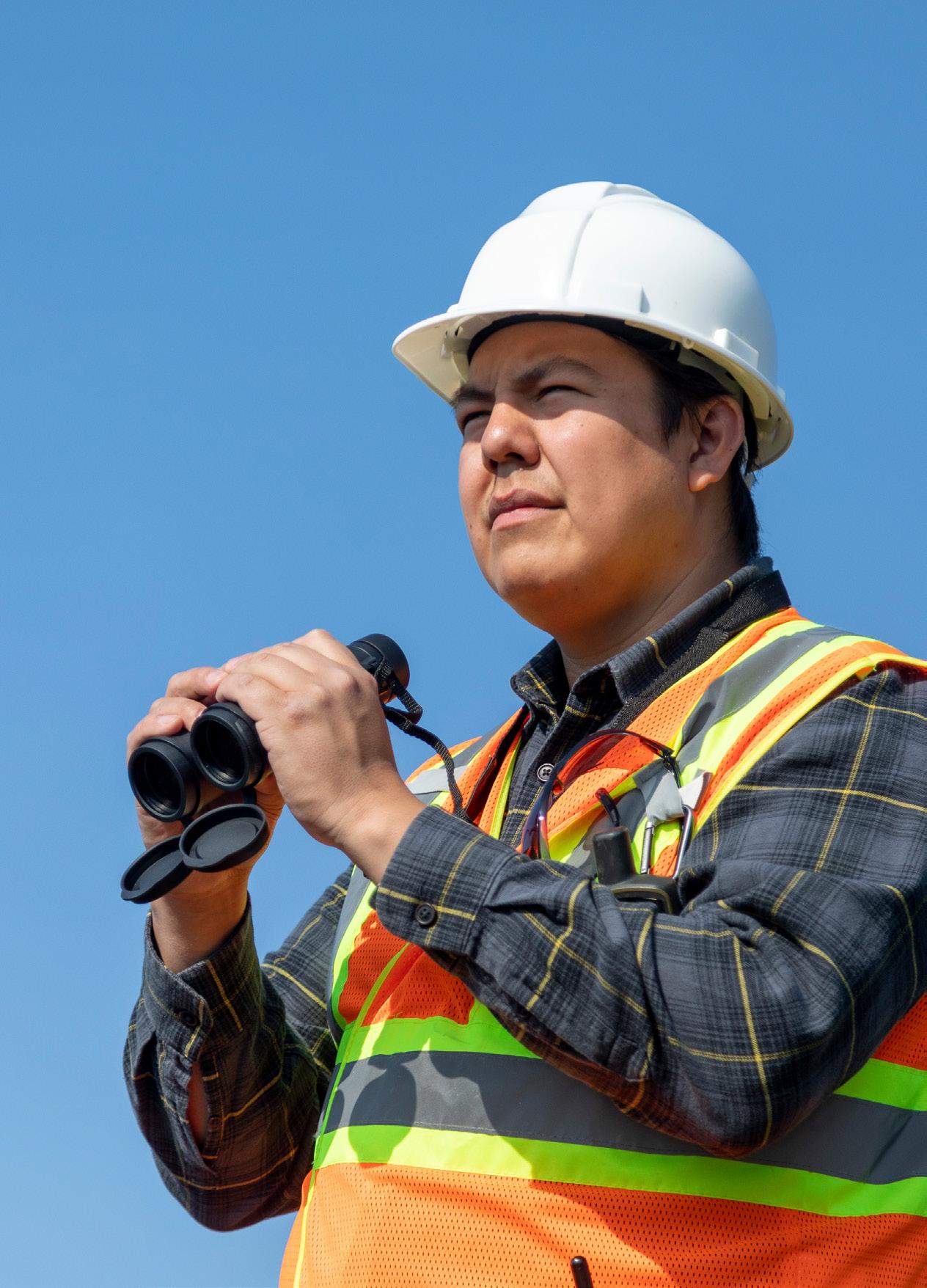
Background:

- Stephen Lindley, Board Co-Chair, Indigenous Works
Statistics Canada reporting shows that 33 per cent of Indigenous employees experienced workplace discrimination within the past five years.4 Recent evidence demonstrates the problem may be even wider spread: a January 2024 survey5 found that over half of Indigenous employees in the IT sector (58.6%) experience discrimination in their workplaces, and 56.2 per cent reported they were forced to play down their Indigeneity to “fit in better at the workplace.”
4 Experiences of discrimination among the Black and Indigenous populations in Canada, 2019 (statcan.gc.ca).
5 Survey: Over half of Indigenous Canadians polled have experienced workplace discrimination, Canadian SME Business Magazine, 2024 https://canadiansme.ca/survey-over-half-of-indegenous-canadians-polled-have-experienced-workplace-discrimination/
Taking Action: Educational Resources for Employees
First Nation University of Canada’s 4 Seasons of Reconciliation Course is offered by Reconciliation Education. Through BDC, this course is available for free to all Canadian entrepreneurs.
Guidebook on Business Reconciliation in Canada was developed by Canadian Council for Indigenous Business, and is a great practical resource for community protocol, understanding Indigenous culture and political systems, and discusses first steps towards reconciliation for companies of all sizes.
The Nishitohtamowin eLearning course provides an introduction to understanding Indigenous perspectives. Through a partnership with BMO, it is available for free to the public until September 2025.
Adapting Job Requirements
Creating inclusive workplaces for Indigenous Peoples requires rethinking traditional approaches and embracing new perspectives. This includes valuing lived experience and community engagement when hiring managers assess job applicants. Broadening job requirements to include “a university degree or equivalent lived experience,” helps diversify the workforce.
Typically, when hiring for a position, companies rely on university degrees to assess candidates’ skills and competencies, except in certain cases where professional certifications or licences are required, such as law or accounting. However, shifting the focus to core competencies—such as project management or budget management —ensures a more inclusive hiring process.
“ “
From what I have observed, and this is probably true of many institutions and organizations, is that we have wanted to jump over the work of ‘Truth’ to get to ‘Reconciliation’ more quickly. What we really need in society is to spend time understanding what has happened here in this country, what has happened to Indigenous Peoples, and by default, what has happened to all Canadians. We need to look at our policies on governance and that needs to be decolonized. We need to review how we do business and bring Indigenous perspectives into that discussion.”
-Dr. Christy R. Bressette, Vice-Provost and Associate Vice-President for Indigenous Initiatives, Western University
When we’re hiring Indigenous people in Ontario, we noticed that a lot of job applications [ask for] university education. Well, the percentage of Indigenous People in Ontario with university degrees is rather small compared to the rest of the province. It means we’re excluding a large chunk of the Indigenous population. So, when we hired for the Indigenous department, we changed that to say university education or relevant experience, and that leads our manager to determine what their relevant experiences would be. One of our managers spent 25 years working with Indigenous youth. So, we hired her because she has the relevant experience. I think changing job descriptions can be key as they’re sometimes very exclusionary.”
- Bill Couchie, First Nations, Métis and Inuit Program Facilitator, Skills Ontario
Empowering Indigenous Employees Through Remote Work
For Indigenous Peoples, family, community, culture, tradition and stewardship are fundamentally tied to the land. This special relationship continues today, with constitutional protections for self-governance of their lands, safeguarding Indigenous Peoples’ right to steward their cultural practices, traditional teachings and spiritual relationships. Centuries of colonization forced Indigenous Peoples towards rural areas and away from newly created Western cities. This dynamic means that today, more than 60 per cent of First Nations reserves in Ontario are located in remote or very remote areas.
As urbanization accelerates, access to jobs increasingly depends on proximity to major cities, where 73.7 per cent of Canadians live. However, 26 per cent of Indigenous Peoples – including 57 per cent of Inuit – continue to live in remote regions, compared to just 3 per cent of the general population. This geographic reality significantly impacts employment outcomes. Métis (69.1%) and non-status Indigenous individuals (64.8%), who predominantly live near urban centers, have employment rates closer to the general population (74.1%). In contrast, Inuit (55.2%) and First Nations living on-reserve (47.1%) face the lowest employment rates, with poverty rates also significantly higher on-reserve (31.3%) than off-reserve (19.8%).
Companies should consider offering permanent remote work for Indigenous employees, particularly for knowledge-based roles. This acknowledges and respects the unique and important relationship that Indigenous Peoples maintain with their land, culture and community. Remote locations can also offer significant benefits, such as lower cost of living, and stronger family and community support.
The COVID-19 pandemic proved that many jobs can be performed effectively from home, though remote work also presents challenges like reduced collaboration and increased burnout. As companies now adopt hybrid work models, companies must consider the unequal impact on equity-deserving groups. Requiring Indigenous employees to relocate to major urban centers for employment purposes poses a significant barrier to their full participation in the workforce. Just as companies accommodate religious holidays and cultural traditions by providing prayer rooms, decolonizing the workplace also means recognizing and accommodating Indigenous Peoples’ fundamental connection to the land and community.
Benefits for Employers:
Cost Efficiency: Hiring employees in rural or remote areas can reduce overhead costs.
Talent Retention: Offering remote work options can help retain talented Indigenous employees who might otherwise be unable to relocate.
Community Support: Employees who live in their communities are likely to have stronger support systems, which can enhance their well-being and productivity.
Increased Focus: Fewer distractions in remote settings can lead to higher productivity.

While some industries, such as healthcare, construction, or energy, may require in-person work, all companies can also work to facilitate cultural and spiritual activities at the workplace, and may consider a schedule that enables more frequent visits back to community.
“I’ve had to work with our leaders across the country and say, ‘let’s be open to hiring talent in market across the country, and not necessarily tie them just to Montreal’… we should be open, hiring talent that will work remote. So, that was another thing that we’ve done.”
- Steve Yan, Director of Diversity, Equity, Inclusion and Accessibility, BDC
Indigenous Perspectives: Inclusion at the Leadership Table
Creating opportunities for Indigenous Peoples in leadership and ensuring diverse perspectives are represented is essential for recognizing and changing policies, procedures, or governance that may adversely impact Indigenous employees. This includes establishing Indigenous Advisory Councils to provide meaningful oversight of corporate actions.
Inclusive environments must be informed by Indigenous lived experiences and realities. While allies play an essential role in supporting equity and inclusion and committing to the work of decolonization, creating space for Indigenous people to share their own perspectives, experiences, challenges, and needs is the only way to ensure that education, employment, and institutions reflect Indigenous values and ways of knowing and being.
Research from the McKinsey Institute shows that diverse companies are 27 per cent more likely to outperform their peers, demonstrating that Indigenous leadership isn’t just about equity; it’s also good for business. Representation at decision-making levels helps identify and address systemic barriers, fostering inclusive workplaces and improving retention.
Ontario colleges and universities have been responsive by establishing new positions at the vice-provost, dean or senior faculty level dedicated to Indigenous education (see list here). Likewise, companies are increasingly committing to Reconciliation Action Plans, employment targets and creating dedicated divisions for Indigenous relations and reconciliation (see RBC Truth and Reconciliation Office and Deloitte’s Nation Building Advisory Practice). Corporations have also increasingly committed to board diversity, with more considering the level of representation on their boards of directors for Indigenous people. However, advocates have called attention to slow progress. While 57 per cent of corporations now have at least one female director, as of 2023, just 3 per cent of corporations had Indigenous representation on their board of directors.6
In the text above, a corporation refers to an entity that issues securities to the public, such as shares or bonds, and is subject to continuous disclosure rules under provincial or territorial securities laws or the laws of a jurisdiction outside Canada. Distributing corporations are often listed on stock exchanges.
6 Government of Canada. (2023). Diversity of Boards of Directors and Senior Management of Federal Distributing Corporations: 2022 Annual Report. Corporations Canada. Retrieved from https://ised-isde.canada.ca/site/corporations-canada/sites/default/files/attachments/2023/2022%20Diversity%20Report_PDF_Final_EN.pdf
Spotlight: Indigenous Advisory Councils
A growing trend among large corporations is the use of Indigenous Advisory Councils. The goal of these councils is to create an opportunity for dialogue and input from Indigenous Peoples, provide feedback on an organization’s policies, programs or strategic direction, and ensure Indigenous perspectives are incorporated.
Councils can supplement input from Indigenous senior leaders, board directors and relationship managers who may feel they are expected to speak on behalf of the wider Indigenous community. To ensure meaningful reconciliation, councils must be fully integrated into the governance structure, with members compensated and provided adequate time and resources to offer valuable input on organizational decisions. These should have a direct connection to the board and be provided the opportunity to provide input into strategy and programming across the organization. Otherwise, they risk becoming nothing more than a “checking the box” exercise and can stall progress towards reconciliation.
While the trend towards greater inclusion is promising, there is also a risk of engagement fatigue as often the same individuals are asked to sit on multiple advisory councils. Organizations should broaden outreach, especially to provide Indigenous women, youth and two-spirited persons with opportunities. Councils should also aim to include distinctions-based First Nations, Inuit and Métis perspectives and to represent the geographic and cultural diversity of Indigenous Peoples.
As companies across various industries, from financial institutions (see BMO) and telecommunications firms (see TELUS) to natural resource companies (see Suncor), decide to establish Indigenous Advisory Councils, many peers may feel pressure to do the same. However, before doing so, organizations must ensure they are willing to adapt to new processes and mechanisms.
I would protest anyone saying that there is not enough talent, because that is just not true. My opinion is that decision-makers have a hard time seeing a non-traditional corporate background as relevant to their environment. So, my job is usually about building an understanding and building a bridge between the formal colonial mindset and systems to something less formal.”
- Laurie Sterritt, Founder and Managing Partner, Pathways Executive Search

Access to Education
The education gap is a significant factor in employment. While 90.7 per cent of non-Indigenous Canadians have completed high school, completion rates are significantly lower for Inuit (56%) and First Nations living on reserve (59.9%). This disparity is the result of government underfunding, cultural exclusion, and the lasting effects of theintergenerational trauma linked to residential schools. Until corporations relax basic education requirements, this gap will remain a substantial barrier to workforce inclusion. Improving access to education includes establishing dedicated admission pathways for Indigenous applicants, removing financial barriers, and providing specific support services to help them succeed.
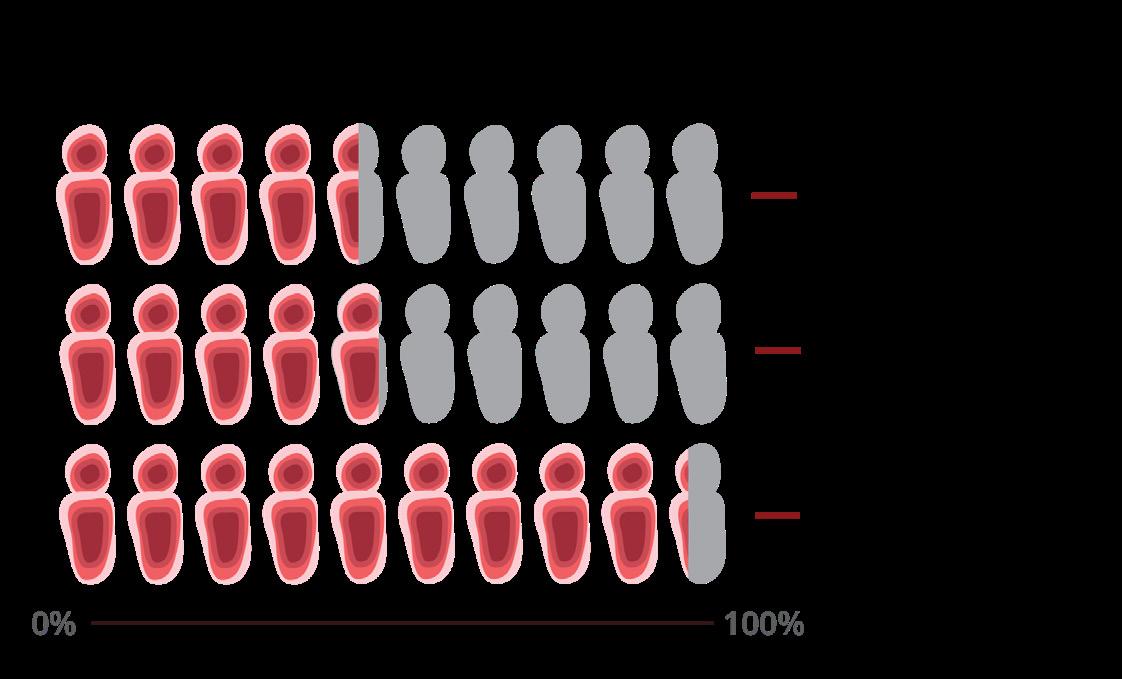
Post-Secondary Admissions Pathways
In recent years, important efforts have been made to support the participation of Indigenous Peoples in post-secondary institutions. Universities have expanded direct outreach to Indigenous communities and created dedicated admissions pathways for Indigenous applicants (see Toronto Metropolitan University), acknowledging the unique barriers faced by students in high school but recognizing their potential for success at a post-secondary level.
Funding
Funding remains one of the most significant challenges to accessing education. More recently, underfunding of Indigenous primary and secondary schools by the federal government has hindered students’ preparation for university. In fact, the gap in high school graduation rates described above (59.9% for First Nations on reserve compared to 90.7% for non-Indigenous Canadians) only widens at the post-secondary level. While 37 per cent of non-Indigenous Canadians have a university degree, the proportion of First Nations (10.4%), Inuit (7.6%) and Métis (18.8%) is significantly lower.
I also want to talk about that equitable access. It’s not just post-secondary. There has to be equitable access to finishing primary and secondary school before we can even enter the conversation about colleges and universities. You often need a bachelor’s degree. That’s four years, three if you’re lucky. When do you start to make that decision, though? You start to apply in grade 12, but you have to choose your courses in Grade 10 —If you’re going to go college stream or university stream. So, that’s seven years. We are behind right now. We have to start targeting those kids in Grade 10. That’s where in seven years from now, you’re going to have a whole bunch of people.”
- Alex St. Germain, Manager, DEI Strategies and Programs – Indigenous Peoples, Scotiabank
To that end, post-secondary institutions must continue eliminating financial barriers for Indigenous students attending school. While Ontario’s Indigenous Student Bursary provides $1,000 to $3,500 annually, Indigenous Services Canada offers more substantial funding through their Post-Secondary Student Support Program, providing up to $53,000.
Private scholarships are also expanding, including TD’s Scholarship for Indigenous Peoples, which offers $60,000 in funding, and Indspire’s Building Brighter Futures, which received more than 6,000 applications last year. Individual universities are increasingly stepping up with specific Indigenous scholarships (e.g., Western University and Queen’s University), while others are eliminating tuition entirely for students from local Indigenous communities (e.g., the University of Toronto, Univeristy of Waterloo, and Humber College).
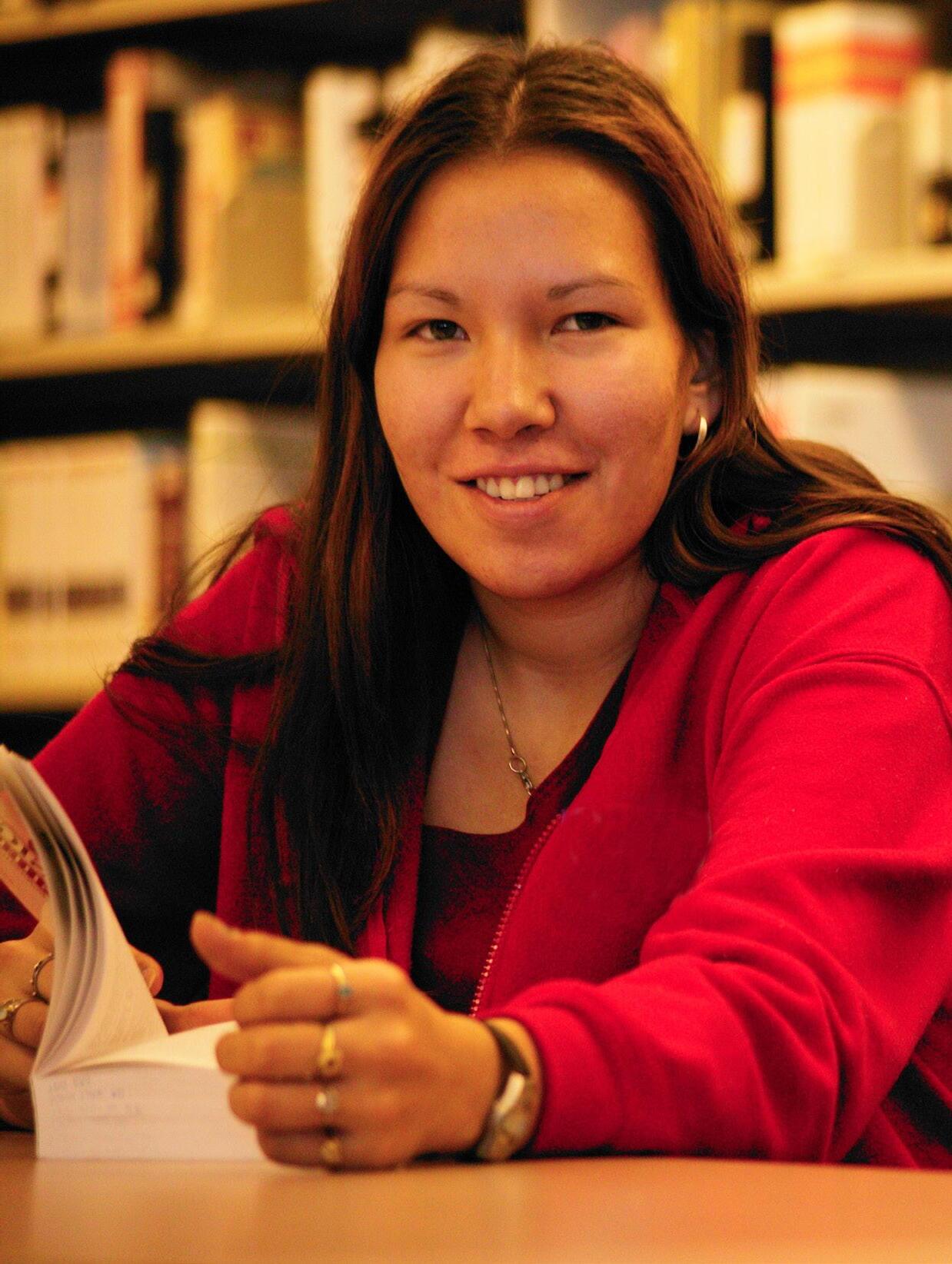
Supporting Student Success
For many Indigenous students, attending a post-secondary institution often means leaving their rural communities for the first time, separating from family, friends, and familiar socio-cultural environments. This transition is further complicated by the lasting impacts of intergenerational trauma and residential schools, increasing the need for mental health, healing, and learning supports.
A key factor of student success is access to Indigenous Student Services Centers (e.g., York University and George Brown College), which enable Indigenous students to find each other and support academic success. These centers offer mentorship, community, learning skills and career supports, cultural supports, Elders, traditional knowledge keepers, and culturally inclusive services.
Making post-secondary education accessible for Indigenous students requires recognizing their unique needs and addressing them through revised admission pathways, expanded financing, and tailored support services to ensure their success. These efforts have led to progress for First Nation students who grew up on reserve, whose university degree attainment almost doubled from 3.4 per cent in 2001 to 6.1 per cent in 2021. However, the gap remains, with the general population still more than three times as likely to hold a degree.
Closing this gap is critical to achieving true educational equity, ensuring Indigenous students can fully participate in the economy and benefit from expanded opportunities.
“When you think about education and how it engages Indigenous people, you always have to think about the colonial impact. Certainly, policies that create barriers for Indigenous people to attend university…for example, if an Indigenous person wanted to learn and attend university, you would be enfranchised and lose your status and if you were a male as the head of the “household’’, your wife and children would also lose their status. If you lived on reserve, you would have lost your home and connection to community. So, it’s always important to understand the context that still impacts the work that we do today.”
- Monica McKay, Director of Indigenous Initiatives, Toronto Metropolitan University

Case Study: Indigenous Institutes
Beyond Ontario’s colleges and universities, Indigenous Institutes form a third unique and complimentary pillar of the province’s network of post-secondary institutions. There are nine institutions in Ontario licensed under the Indigenous Institutes Act, 2017: Annishinabek Educational Institute, First Nations Technical Institute, Kenjgewin Teg, Iohahi:io Akwesasne Education and Training Institute, Oshki-Pimache-O-Win: The Wenjack Education Institute, Ogwehoweh Skills and Trades Training Centre, Seven Generations Education Institute, Shingwauk Kinoomage Gamig and Six Nations Polytechnic.
Indigenous Institutes are established with a mandate from First Nations leadership, offering curriculum and programs that reflect community needs such as nursing, early childhood education, teaching, welding, construction, social services, or Indigenous language education. Once needs are determined, institutes will often partner with colleges and universities to provide relevant degrees, diplomas, certificates, apprenticeships and continuing education. They will also adapt the curriculum to incorporate Indigenous knowledge, languages, worldviews and ways of knowing and living— for example, by including Indigenous traditional healing practices in a nursing program. This approach means that institutes are offering culturally relevant education while responding to the needs of community, and addressing labour market demands, strengthening healthcare services, infrastructure, and social services for Indigenous communities.
Many of the learners who come to Indigenous Institutes are older. They may have families, have lost their culture, and/ or want to stay in community to continue their education. These institutes meet this need by delivering programs in remote and northern communities on-reserve, online, and in accessible formats that remove barriers to participation. In fact, more than 80 per cent of learners live on reserve, and Indigenous Institutes report that graduation rates are 10 percentage points higher than for Indigenous learners at traditional colleges. These factors explain how Indigenous Institutes have grown to serve 99 communities across Ontario and more than 340,000 people.
The success of Indigenous Institutes provides a clear case study: creating inclusive environments is possible but requires commitment. By exploring innovative delivery models to fit the unique needs of community, other
sectors can also expand access for Indigenous Peoples. However, the reach of Indigenous Institutes remains hampered by inadequate funding, which has declined in real terms as inflation has soared. To achieve educational equity, the government must provide sustainable funding to Indigenous post-secondary institutions as part of its broader commitment to addressing funding challenges in higher education.
“ “
I’ll give Oshki-Pimache-O-Win: The Wenjack Education Institute as an example because they serve 49 First Nations communities, so they go the furthest north into fly-in communities. Their program is quite unique, because the learner would travel to Thunder Bay, for about two weeks, and they receive intensive programming, in courses such as practical nursing, and social service worker, then they go back to their home community. So, in those two weeks, the Indigenous Institute provides everything, like information for access to accommodations, food, transportation, everything that the learner needs to come to program for those two weeks prepared to learn. When they are back home, they can plug in virtually to complete their program. All of our memb er institutes provide some form of virtual learning, so some institutes were kind of ahead of the game when COVID hit, because they’ve been offering hybrid or virtual programming which offers more flexibility for the learner.”
- Marsha Josephs, Executive Director, Indigenous Institutes Consortium
Our cohorts in our programs are most often full, and we have mostly Indigenous students which is wonderful. We have a student success facilitator sit in every class. We use Zoom/virtual delivery, for our classes for most FNTI programs, although some programs are in person. We have Elders and/or knowledge keepers in our cohorts as well. So the learners develop one of the key things within Indigenous learning, which are relationships. They have the same supports moving through their program, whether it is the social service worker, mental health and addiction worker or Nursing. Our students, our learners come from the Indigenous community, and there is a need for collective healing, so we must remember that in how we educate and support our students.”
- Erin Moe, Academic Dean of Partner Programs, First Nations Technical Institute
Conclusion
As Canada strives for economic reconciliation, addressing barriers to education and employment is essential to fostering equal opportunity. The practices discussed above are efforts to respond to the impacts of education, discrimination, and location on Indigenous workforce participation, both historically and currently. However, achieving true representation of Indigenous people at all levels of Ontario’s business community requires continued efforts, benefiting every business, shareholder, and consumer.
Key Barriers to Workforce and Educational Inclusion:
Education gaps: Many jobs require post-secondary education, yet systemic barriers have historically limited access for Indigenous Peoples, making this a significant hurdle to workforce participation.
Discrimination & trust deficits: Negative stereotypes about Indigenous Ways of Knowing, work ethic, and culture persist, contributing to exclusion. Indigenous employees are 50 per cent more likely to experience workplace discrimination7, and many remain skeptical of institutions—universities, employers, and governments— that have historically broken trust.
Geographic challenges: Indigenous communities were purposely displaced to remote areas, and today, nearly 25 per cent of Indigenous Peoples still live in remote regions, compared to just 3 per cent of the general population.8
Meanwhile, urbanization has concentrated job opportunities in major centers, further exacerbating inequities in workforce access.
Canada faces growing labour shortages, and employers must tap into diverse talent pools to remain competitive. Advancing Indigenous inclusion is not just a social obligation—it’s an economic necessity. Research shows that diverse organizations outperform their peers, drive innovation, and improve decision-making.
The following section outlines practical, actionable steps for employers, leaders and institutions to create an inclusive workforce. Economic reconciliation is an ongoing journey that requires commitment, collaboration, and continuous effort. By embedding equity into workplace policies, hiring practices, and leadership development, businesses can contribute to a more prosperous, inclusive future—one where Indigenous Peoples thrive and Canada’s economy grows stronger.
7 Survey: Over half of Indigenous Canadians polled have experienced workplace discrimination, Canadian SME Business Magazine, 2024 https://canadiansme.ca/survey-over-half-of-indegenous-canadians-polled-have-experienced-workplace-discrimination/
8 The Daily — Indigenous population continues to grow and is much younger than the non-Indigenous population, although the pace of growth has slowed (statcan.gc.ca)
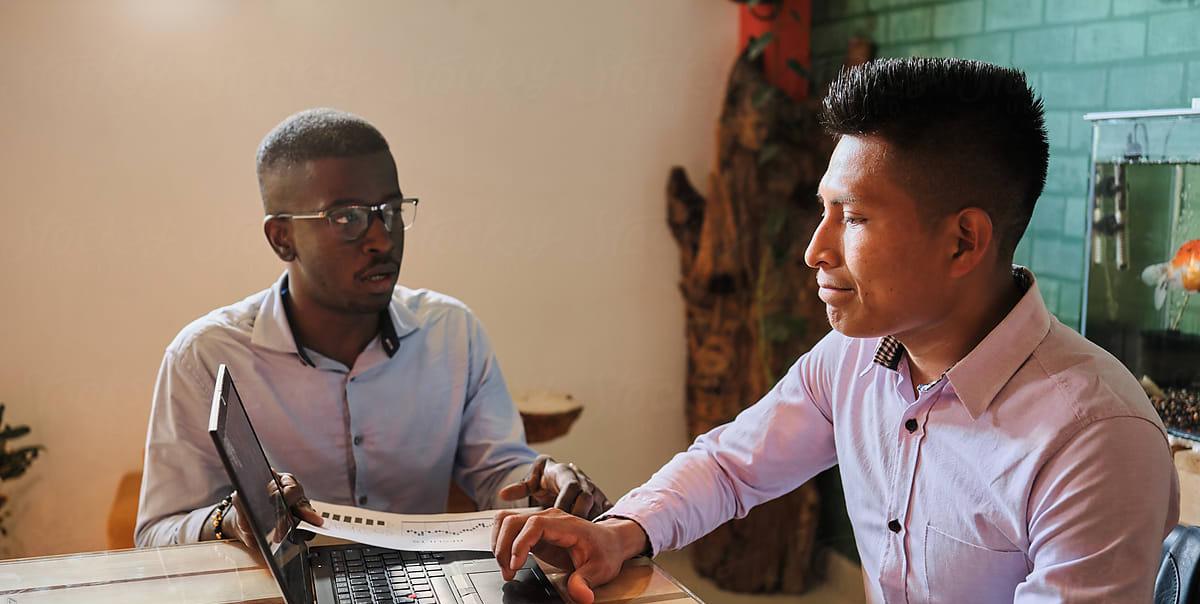
Reconciliation Pathways: Summary of Recommendations
The following recommendations provide guidance to educational institutions, employers, and governments in Ontario to help broaden access for Indigenous Peoples, benefiting Canadian businesses and the overall economy.
1. Create specific Indigenous pathways with dedicated job postings for First Nations, Inuit and Métis candidates to advance meaningful inclusion and widen opportunities for non-traditional candidates.
2. Build inclusive environments for Indigenous Peoples to thrive, including mandatory training for management and all staff about Indigenous history, the legacy of residential schools, treaties, and skillsbased training in intercultural competency, conflict resolution and anti-racism as advocated by TRC Call to Action #92.
3. Adapt job requirements to use a skills-based assessment approach, which recognizes the value of lived experience gained in the community. This approach can support the hiring of employees from diverse backgrounds who have all the necessary capabilities but may not meet typical education requirements including by advertising for “university degree or equivalent experience.”
Next Steps
1. Engage: Initiate dialogues with Indigenous communities, organizations, and leaders to understand their needs and perspectives.
2. Develop Action Plans: Create detailed action plans that outline specific steps, timelines, and responsibilities for achieving the outlined recommendations.
3. Implement Training Programs: Implement mandatory training programs for all staff to build intercultural competency, conflict resolution skills, and understanding of Indigenous history and rights.
4. Embrace remote work for Indigenous employees in corporate policies, as organizations consider approaches to “back to office” mandates. Recognize that one in four Indigenous people live in rural and remote communities, and there is a unique importance of a connection to land, culture and community for Indigenous employees. Remote work is particularly important for Indigenous women and family caregivers, allowing them to balance their professional and family responsibilities while maintaining cultural connections.
5. Make education more accessible, including supporting Indigenous students with admission pathways that recognize their unique circumstances, providing access to adequate government funding, providing student support services for healing, learning, and access to cultural support, and exploring innovative delivery models.
6. Incorporate Indigenous perspectives in corporate policies, programs and decisions, including by ensuring Indigenous Peoples with lived experience are represented in senior management, on boards of directors and by leveraging Indigenous Advisory Councils to provide meaningful perspective on all corporate actions, with defined responsibilities and adequate resources, specified in corporate governance models.
4. Monitor Progress: Establish metrics and regular reporting mechanisms to track progress towards economic reconciliation and equity goals.
5. Foster Partnerships: Build and strengthen partnerships with Indigenous organizations, educational institutions, and businesses to support ongoing efforts and initiatives.
6. Promote Awareness: Raise awareness about the importance of economic reconciliation and the business benefits of inclusive growth through public campaigns and educational initiatives.

